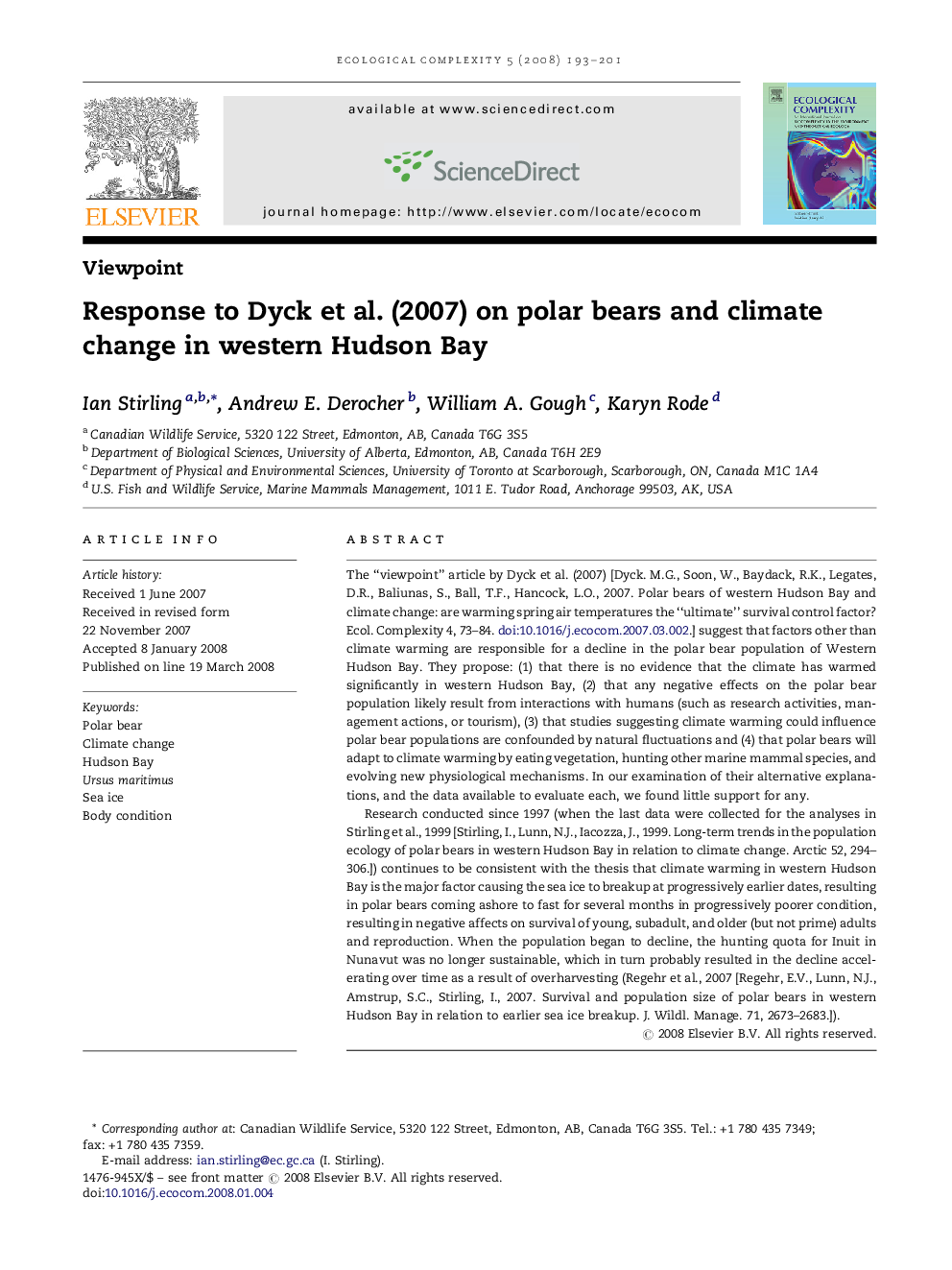| کد مقاله | کد نشریه | سال انتشار | مقاله انگلیسی | نسخه تمام متن |
|---|---|---|---|---|
| 4372795 | 1303082 | 2008 | 9 صفحه PDF | دانلود رایگان |

The “viewpoint” article by Dyck et al. (2007) [Dyck. M.G., Soon, W., Baydack, R.K., Legates, D.R., Baliunas, S., Ball, T.F., Hancock, L.O., 2007. Polar bears of western Hudson Bay and climate change: are warming spring air temperatures the “ultimate” survival control factor? Ecol. Complexity 4, 73–84. doi:10.1016/j.ecocom.2007.03.002.] suggest that factors other than climate warming are responsible for a decline in the polar bear population of Western Hudson Bay. They propose: (1) that there is no evidence that the climate has warmed significantly in western Hudson Bay, (2) that any negative effects on the polar bear population likely result from interactions with humans (such as research activities, management actions, or tourism), (3) that studies suggesting climate warming could influence polar bear populations are confounded by natural fluctuations and (4) that polar bears will adapt to climate warming by eating vegetation, hunting other marine mammal species, and evolving new physiological mechanisms. In our examination of their alternative explanations, and the data available to evaluate each, we found little support for any.Research conducted since 1997 (when the last data were collected for the analyses in Stirling et al., 1999 [Stirling, I., Lunn, N.J., Iacozza, J., 1999. Long-term trends in the population ecology of polar bears in western Hudson Bay in relation to climate change. Arctic 52, 294–306.]) continues to be consistent with the thesis that climate warming in western Hudson Bay is the major factor causing the sea ice to breakup at progressively earlier dates, resulting in polar bears coming ashore to fast for several months in progressively poorer condition, resulting in negative affects on survival of young, subadult, and older (but not prime) adults and reproduction. When the population began to decline, the hunting quota for Inuit in Nunavut was no longer sustainable, which in turn probably resulted in the decline accelerating over time as a result of overharvesting (Regehr et al., 2007 [Regehr, E.V., Lunn, N.J., Amstrup, S.C., Stirling, I., 2007. Survival and population size of polar bears in western Hudson Bay in relation to earlier sea ice breakup. J. Wildl. Manage. 71, 2673–2683.]).
Journal: Ecological Complexity - Volume 5, Issue 3, September 2008, Pages 193–201